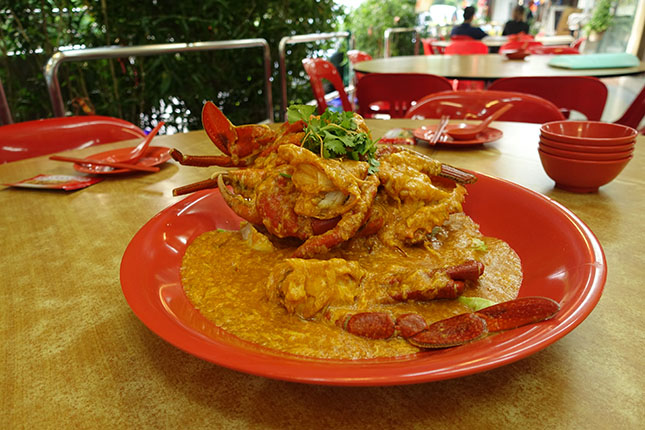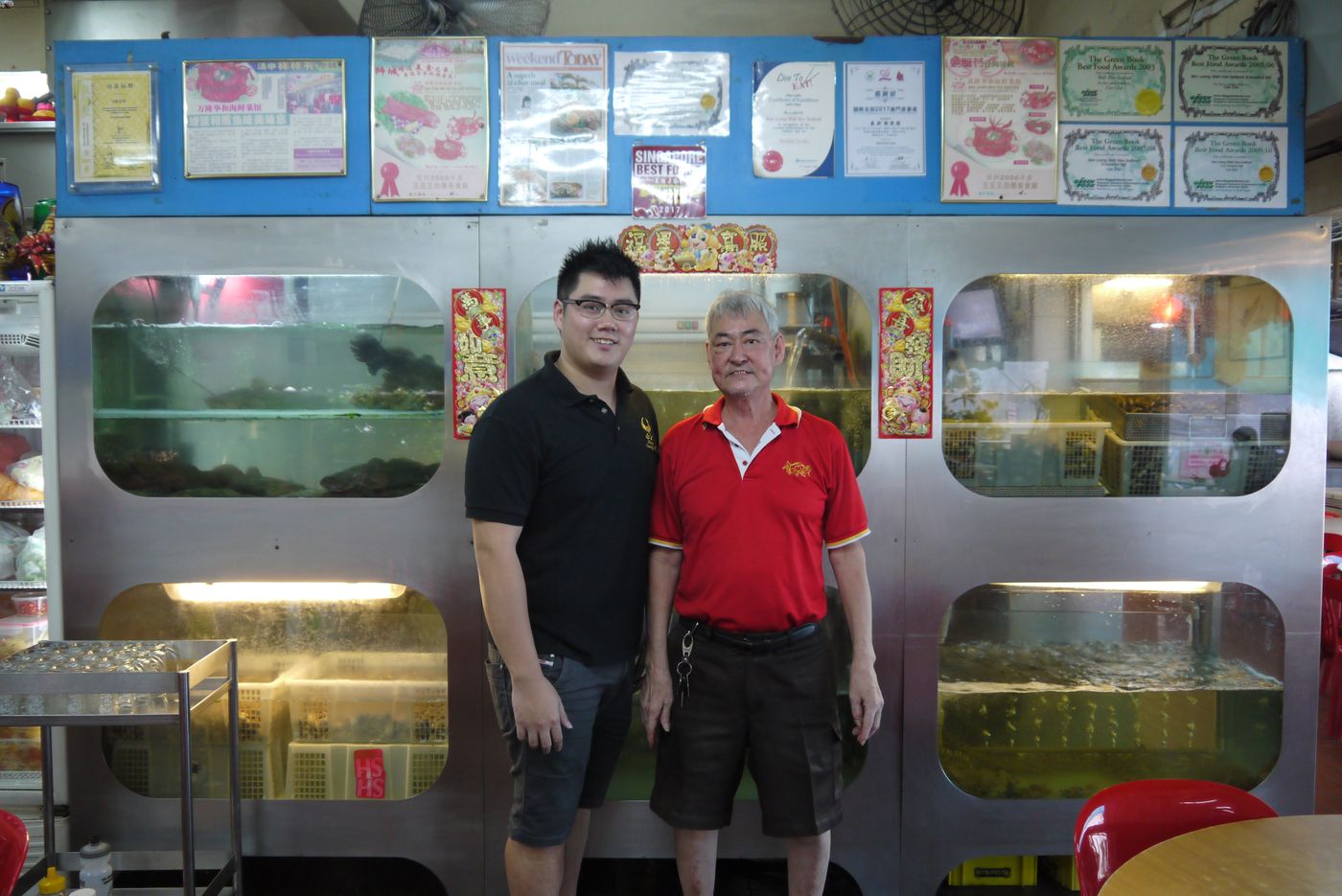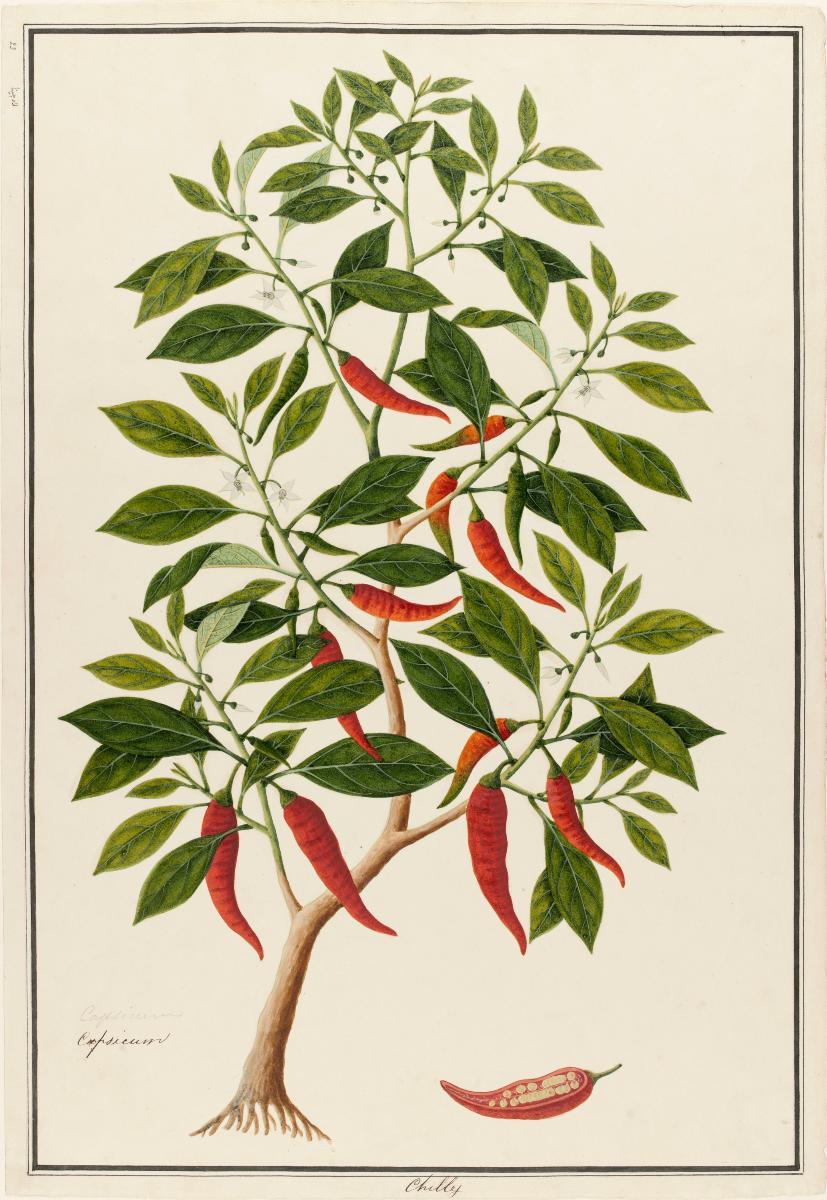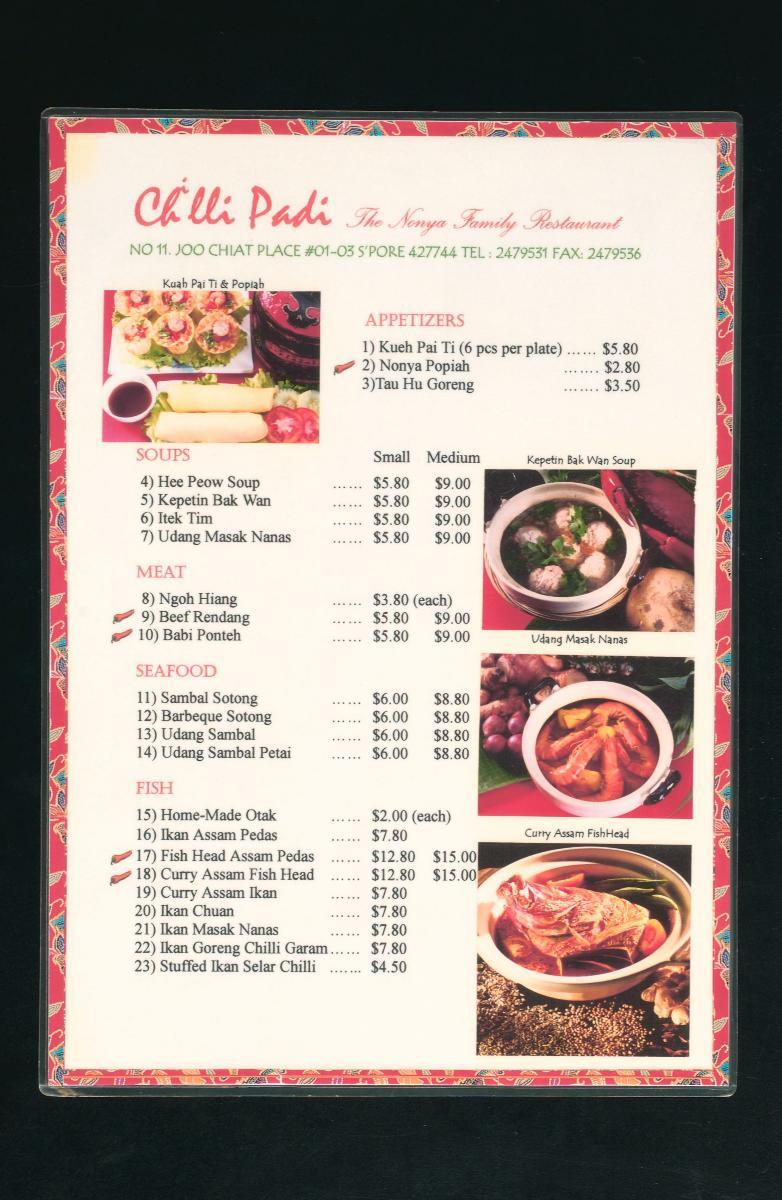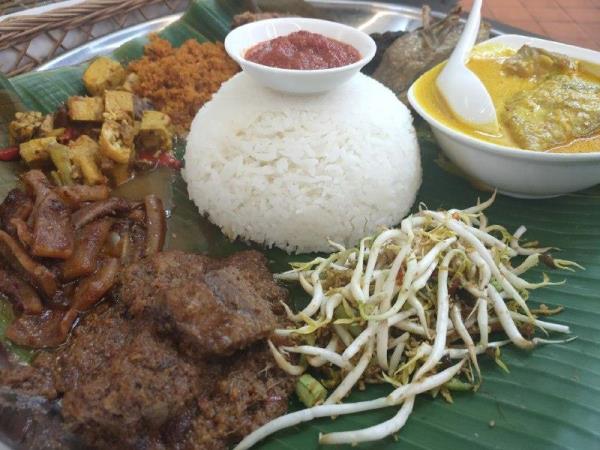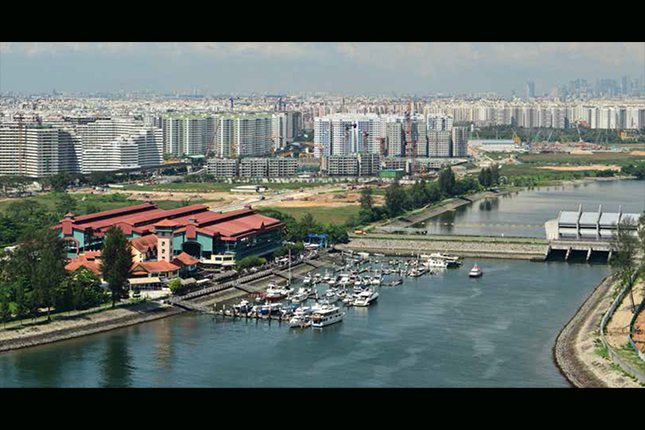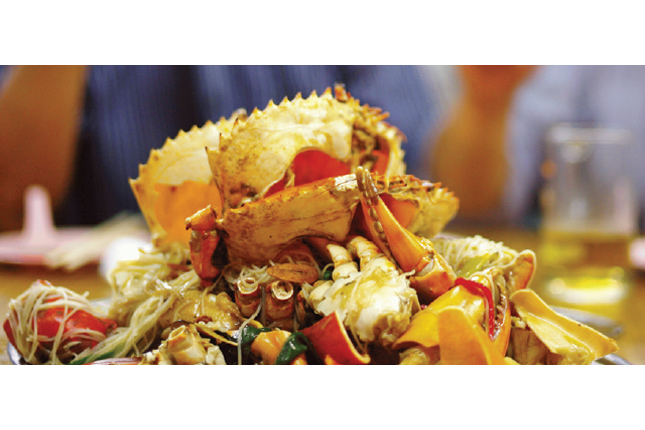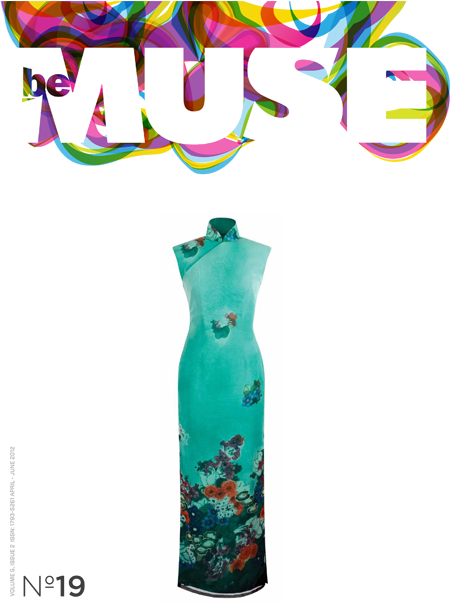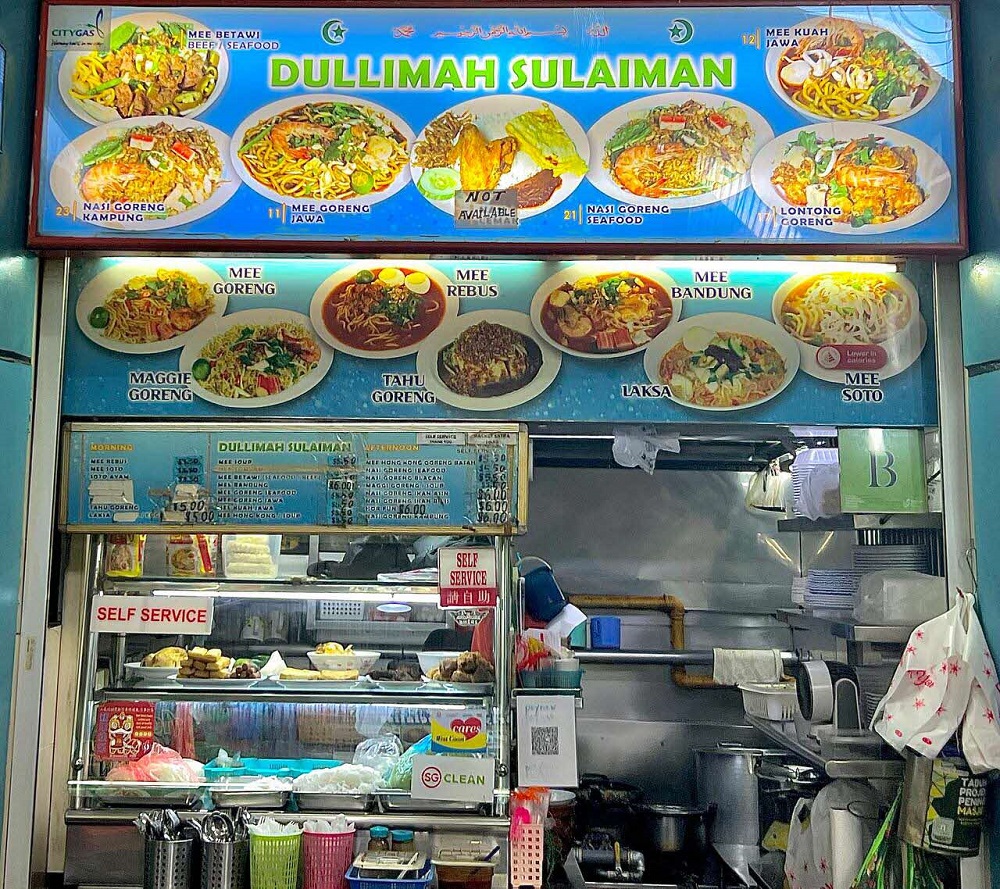Chilli Crab
Chilli crab is dish made up of stir-fried crabs cooked in a thick, savoury chilli sauce varying in levels of sweetness and spiciness, typically served with small mantou buns (fried or steamed Chinese buns). It is often described as Singapore’s national seafood dish and is found in eateries across the country. Cooking the dish involves a lengthy 14 steps, where the mud crabs and the sauce are prepared before combining the two and refining the sauce.
The chilli crab dish made its appearance in Singapore in the mid-1950s, when Madam Cher Yam Tian added chilli sauce to stir-fried crabs, and then started selling it from a pushcart in Kallang alongside her husband Mr Lim Choon Ngee. The dish’s success allowed them to open Palm Beach Restaurant in East Coast in 1962, thus introducing the dish to Singapore on a wider scale. Their son Mr Roland Lim has carried on the trade by opening the Roland Restaurant, which is still in operation today.
Geographic Location
In Singapore, chilli crab is sold in many local tze char (Chinese dishes cooked to order) stalls and seafood restaurants these days. The availability of ready-made chilli crab mixes and pastes has meant that the dish can be made at home too.
Communities Involved
The wider population in Singapore enjoys and consumes chilli crab. The knowledge of chilli crab is held by chefs at seafood restaurants and eateries, who and adapt and innovate the dish to cater to the taste buds of customers.
Associated Social and Cultural Practices
Many adaptations and variations of the dish exist today. The chilli crab in most restaurants is richer and less sweet compared with Madam Cher’s original version, and the now-commonplace ingredients of sambal and eggs in the sauce were first added by Dragon Phoenix restaurant. Other crab dishes are often sold alongside chilli crab, cooked with sauces like black pepper, salted egg, or ginger and scallion, and some restaurants like Long Beach have become famous for both chilli crab and their own specialities.
Chilli crab has featured prominently in competitions centred on local cuisine. The top chilli crab chefs were invited to showcase their talent in the 2006 Singapore Food Festival, while the dish took centre stage at the London-based Tiger Beer Chilli Crab festival from 2007 to 2009. It has also been seen as a representative of Singaporean cuisine, with Singaporean hawkers cooking the dish alongside food vendors from all around the world in the World Street Food Congress 2017, held in New York. The dish is also enjoyed by visitors to Singapore and has been featured on international platforms and TV programmes such as MasterChef Australia.
Experience of a Practitioner
Mr Teh Chor Joo is the first-generation owner and chef of Ban Leong Wah Hoe Seafood Restaurant. His son Mr Dextre Teh is the second-generation owner. Prior to the restaurant opening in 1986, the older Mr Teh had learnt to cook dishes like fried noodles and chilli crab at his brother’s food stall in the mid-1960s.
Meanwhile, Mr Dextre Teh manages the administrative and marketing elements of the restaurant, implementing publicity campaigns like a “Chilli Crab Challenge” that invited competitors to finish two kilograms of chilli crab and six fried mantou within half an hour.
To make sure that the chilli crab sold in the restaurant maintains a high standard, the older Mr Teh maintains tight control over each component of the dish, sourcing a variety of crabs from different countries, separating crabs according to quality at the restaurant itself, and even customising ladles to fine-tune the measurement of sauces. Given his culinary experience on how different ingredients interact, Mr Teh’s version of the dish is therefore one that is flavourful, not spicy yet also easily cooked.
Although the Tehs have plans to keep the restaurant and recipe under family ownership, they recognise that they will have to overcome challenges such as a labour crunch and the rising prices of crabs. They will also have to attract younger customers in order to diversify beyond long-time regulars.
The Tehs take pride in selling chilli crab. To them, the dish is an icon of Singapore’s cuisine and culture. The communal aspect of eating chilli crab with one’s family and friends also emphasises how meals are shared experiences in Singapore. Nonetheless, they recognise that chilli crab will continue to evolve as a dish, thanks to a diversity of chefs and cooking styles.
Watch: Chilli Crab
Present Status
The dish as a whole remains a firm favourite with diners, with a plethora of restaurants offering it on the menu, often with their own special take on the dish. There have also been new interpretations, with restaurants and eatery chains serving it as sandwiches, dumplings, ice cream and curry puffs. Technological advances have made it even easier for the public to buy a plate of chilli crab. For example, in 2017, the House of Seafood restaurant introduced a vending machine that sold ready-to-eat and frozen chilli crabs. Chilli crab continues to grow in popularity internationally as well.
References
Reference No.: ICH- 067
Date of Inclusion: March 2019
References
Cheu, Hock Tong. Analysis of the Nine Emperor Gods Spirit-Medium Cult in Malaysia. Ithaca, N.Y, Cornell University, 1982.
Cheu, Hock Tong. “The Festival of the Nine Emperor Gods in Malaysia: Myth, Ritual, and Symbol” Asian Folklore Studies 55, (1): 49-72, 1996.
Comber, Leon. Chinese Temples in Singapore. Singapore: Eastern Universities Press, 1958.
DeBernardi, Jean Elizaebth. Penang: Rites of Belonging in a Malaysia Chinese Community. Singapore: NUS Press, 2009.
Elliott, Alan John Anthony. Chinese Spirit-Media Spirit-Medium Cult in Malaysia. London: Royal Anthropological Institute, 1955.
Heinze, Ruth-Inge. “The Nine Imperial Gods in Singapore” Asian Folklore Studies 40 (1): 161-65, 1981.




